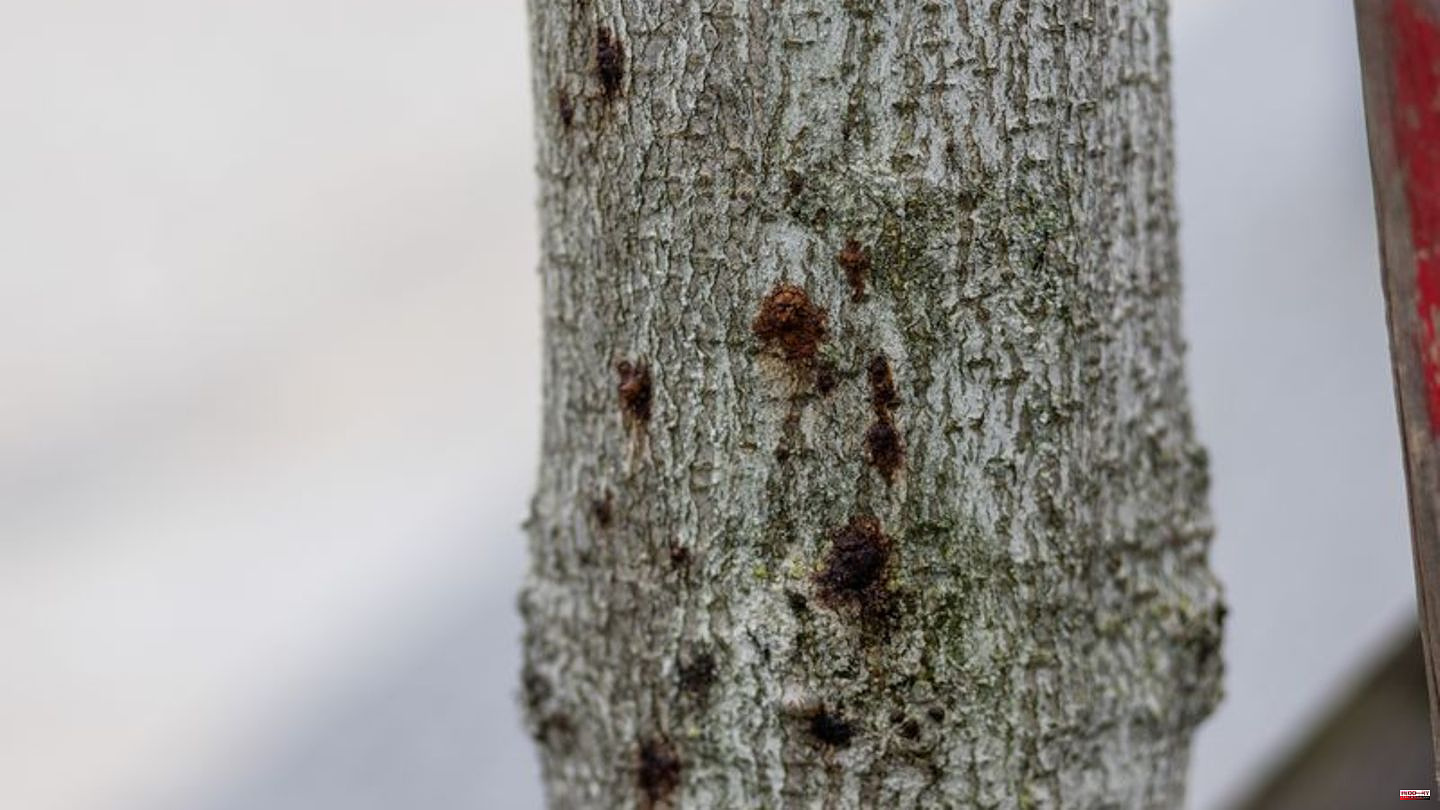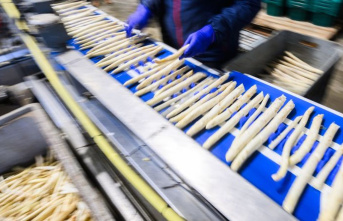He is a difficult patient. He cannot hear, see or talk about his condition. And yet things are bad for him, the tree. Kathrin Blumenstein from the University of Freiburg cares about his health. She is Germany's first and only professor of tree pathology. The biologist deals with the major and minor ailments of her protégés at the university level. She is familiar with the symptoms. Crumbly areas on the bark, yellow-colored needles, necrosis, dead branches - and ultimately often death. The expert on tree diseases doesn't want to let things get that far. "I love forests and nature and think it's nice to do research that helps keep trees healthy," she says.
Blumenstein must counteract the consequences of climate change. Her area of expertise is microorganisms, especially fungi. In her laboratory, she has grown 500 species of fungi in petri dishes. They are spongy, creamy, furry, colorful and reminiscent of modern art. The researcher is investigating the question of which harmless fungi can be used as counterparts to harmful ones. Further questions concern the potential for pollutants and the growth of individual fungal species as well as changes in their properties under different environmental conditions.
“Mushrooms can be a blessing or a plague for trees,” says the mycologist. The mushroom expert distinguishes between three characteristics. Fungi like Ophiostoma novo-ulmi, which causes Dutch elm disease, basically damage their host tree by blocking its water channels and causing the tree to die of thirst in a short time. So-called endophytic fungi, which grow inside plants, live in harmony with trees - the tree offers them habitat and nutrients, and in return the fungi strengthen its defenses.
Opportunists among the mushrooms
The third group includes the growing number of so-called opportunists among the fungi. The mutually beneficial symbiosis ends abruptly when the tree comes under stress, be it due to hail, climate extremes or drought. "Then the fungi change their lifestyle and suddenly become a danger inside the tree, which can cause it to die," explains Blumenstein. Why do these fungi mutated into parasites eliminate their food source? "It's easier for them to get nutrients from dead cells than from living ones."
As an example of such "ungrateful" beneficiaries, Blumenstein cites the heat-loving fungus Diplodia sapinea, which has been increasingly spreading in Central Europe in the last five to ten years due to climate change and attacks pine trees when they have already been damaged by heat or lack of water. A consequence can also be seen in the federal government's forest status report. According to its data, the proportion of significant crown thinning in pine trees has increased within one year from 25 to 28 percent in 2022.
Blumenstein's patients have been getting worse for decades. According to the report, four out of five trees are sick. The density of the tree crowns is measured as an indicator of the vitality of the trees. The average crown thinning has fallen slightly across all tree species from 26.7 percent to 25.9 percent. However, the excretion rate, i.e. the proportion of trees that have died since the last survey, has reached a record high of 6.7 percent.
According to Blumenstein, Germany is lagging behind in researching these phenomena. Scandinavia, for example, is much further along in this regard, also because it is economically more dependent on forests. Blumenstein calls for more research funding: "We can only help them better in the future if we better understand what exactly is happening in our trees."
Looking at molecular genetic biomarkers
For the Freiburg resident, the international network of tree pathologists is also important in order to exchange important information more quickly. Molecular genetic biomarkers can be used to track where a fungus comes from, where it spreads and predict where it will move on. In this way, regions can adapt to uninvited guests and plant more resilient trees. So-called hybrids are suitable for this, i.e. crosses between ash or elm and imported trees. Blumenstein: "We will have to say goodbye to some native tree species and focus on which tree species will still be vital in 50 years with a warmer climate and new invasive species."
The issue of tree health is also increasingly relevant in cities. Trees bind pollutants, provide shade and are habitats for birds and insects. Sick trees, on the other hand, pose a danger to traffic and occasionally have to give way. Example Mannheim: After a storm in mid-April, the city reported 30 damaged trees in its parks and 5 trees that could no longer be saved.
The reason for tree felling is often not so obvious. “Since the decomposition can only be seen externally late, there is great criticism of the felling of supposedly healthy trees,” says the German Association of Cities and Municipalities. However, the municipalities are very sensitive to this issue and generally provide comprehensive information about the needs, be it through official announcements or events with experts, says the head of the municipal forest department at the association, Ute Kreienmeier. She adds: “Today no one puts an ax to a tree without having good reasons for doing so.”
Forest status report Forest in numbers












